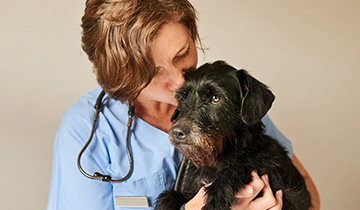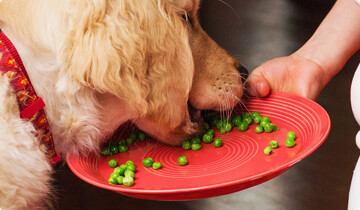Caring for your furry friend’s teeth doesn’t have to break the bank.
Caring for pets goes beyond feeding, exercising and cuddling our fur babies. It also means looking after their health.
But how many of us remember that also means looking after their teeth?
Why should I care for my pet’s teeth?
You may be surprised to learn that dogs and cats can suffer from dental problems just as we do.
In the 1980s, one study revealed that 70% of cats and 80% of dogs have some form of dental problem by the time they're two years of age. But, by 2018, studies were reporting periodontal disease rates at around 90%.1
Does that mean our cats and dogs' teeth are getting worse?
No, it’s more likely that nowadays we have better equipment, like dental radiography, for monitoring dental health and detecting potential problems early.
"We do an oral check as part of a pet's general health check, or when they come in for their vaccinations," says Jess Ashley, Practice Manager at Orewa's Millwater Vet.
"Every single animal we see will have some degree of tartar. Whether that's just a grade one – normal tartar buildup, right through to a grade four – which is wobbly teeth and severe bad breath. They all have some form of dental issue. "
Active toothcare – brushing pet teeth
We can care for our furry friend's mouths with active and passive care. Examples of passive care include chew sticks or adding oral hygiene treatments to their water.
Veterinarians say that regular toothbrushing using veterinary toothpaste could be the most effective active care you can do at home.
“Tooth brushing is the gold standard and is most effective on teeth at the front of the mouth. However, a combination of active and passive methods is likely to be the best choice,” says Sally Cory, Head of Veterinary Services, Companion Animal, NZ Veterinary Association.
Make sure it's veterinary toothpaste because ingredients in human toothpaste can cause stomach upsets in dogs and cats.
Cat and dog toothpastes are usually enzymatic. That means they contain enzymes that reduce bacteria and work on the tartar buildup on pet teeth. The pastes come in 'interesting' flavours, like chicken, malt and even cheese – all much more to our pets' taste than minty fresh.
Possibly the trickiest thing about brushing pet teeth is getting them to let you near their mouths with a toothbrush. And the best solution is to get them used to having their teeth touched when they're young.
Start by touching their lips, opening their mouths and gently rubbing their teeth several times a week. Once your kitten or pup is used to that, use your finger to rub a little toothpaste around their front teeth to get them used to the taste. Then, move towards their molars at the back.
Slowly progress to using a toothbrush, first at the front and then, finally, on all their teeth.
Putting a little time and effort in when our puppies and kittens are young means they're much more likely to happily accept toothbrushing as adults.
Home-care tips for your pet’s teeth
What else can we do at home to protect our furry friends' teeth besides regular toothbrushing?
Dental biscuits and dental chews can be a good option. Their texture and composition help to scrub our pets' teeth while they chew.
Mix the biscuits with their usual dry food or use dental chews as a fun treat.
Another option involves popping a specially formulated additive into their daily drinking water. Dental additives can help with oral hygiene and keep their breath fresh. Add the recommended measured amount once each morning to fresh water and throw out any water left at the end of the day.
Prevention still works best
Caring for our pets' teeth at home can be very effective in helping to keep their mouths fresh and their teeth in good condition.
While leaving our pets' dental health to chance might be tempting, prevention is better than cure. So, no matter how vigilant we are at home, checking their teeth at the vet is still a good idea as part of your annual pet health routine.
Learn more about pet dental problems we'd rather avoid in When your pet's teeth warrant a trip to the dentist.
References
https://onlinelibrary.wiley.com/doi/epdf/10.1111/jsap.13132
World Small Animal Veterinary Association Global Dental Guidelines, B. Niemiec, J. Gawor, et al, First published: 26 July 2020, Wiley Online Library, Periodontal Disease. Accessed 18.02.2024
https://youtu.be/sUdDaXMmeks?si=bko_lxfcoQiCh_7p
YouTube: How to brush your cat’s teeth. Helpful Vancouver Vet. Accessed 18.02.2024
https://youtu.be/F6S50BZU1D0?si=p1_HyHWg7K5SbI45 (American Kennel Club)
YouTube: How to brush your dog’s teeth. American Kennel Club. Accessed 18.02.2024


